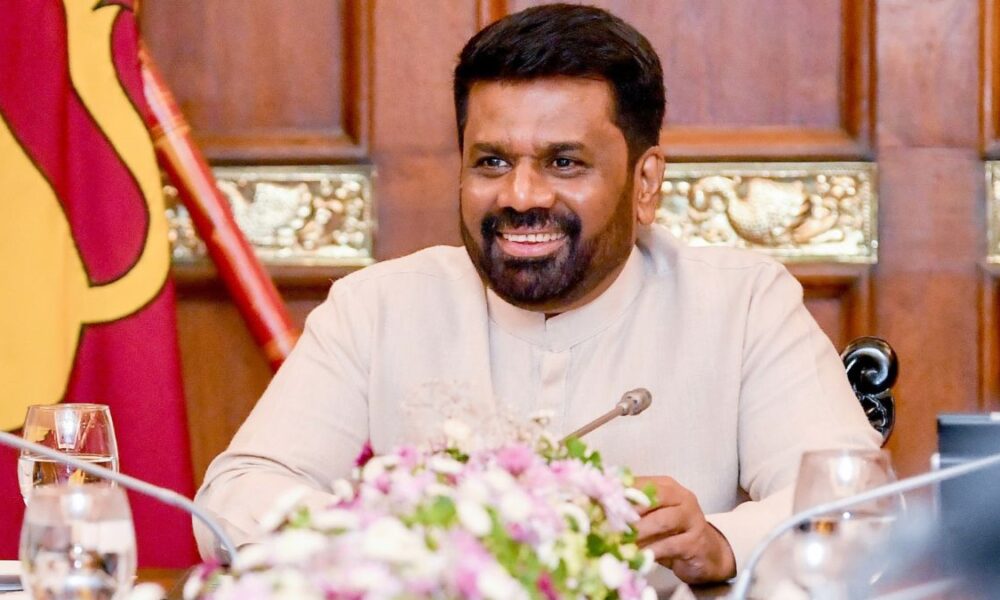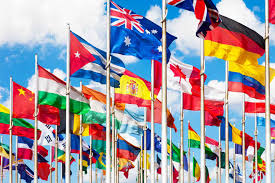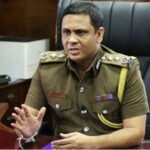
Bridging Worlds, Rebuilding Trust: President Anura Kumara’s Strategic Visit to Germany
- CNL Reporter
- June 10, 2025
- Weekly Political Review
- President Anura Kumara
- 0 Comments
Weekly Political Review
By Rohana Jith
This week, President Anura Kumara Dissanayake will be embarked on what is arguably one of the most significant diplomatic engagements of his presidency thus far—an official visit to Germany.
Against a backdrop of global economic uncertainty and Sri Lanka’s fragile recovery from years of crisis, this visit signals a serious attempt by the administration to reposition the country as a credible, reform-driven partner on the world stage.
The three-day visit (June 11–13), undertaken on the invitation of German President Frank-Walter Steinmeier, is rich in political symbolism and practical value. Germany, as Europe’s largest economy and a leading voice in the European Union, holds both strategic and economic relevance for Sri Lanka.
The president’s itinerary includes high-level political talks, a business investment forum hosted by the German Chamber of Commerce (DIHK), and meetings with tourism and civil society stakeholders.
But this visit is not an isolated diplomatic gesture—it is part of a broader, meticulously coordinated foreign policy outreach that has taken President Dissanayake to India, China, the UAE, and Vietnam in just six months.
A New Foreign Policy Doctrine?
President Dissanayake’s foreign policy approach marks a decisive break from the reactive and overly transactional diplomacy of the past. Since assuming office in late 2024, the administration has pursued what appears to be a multipolar strategy—balancing strategic ties with regional powers while building new bridges to the West.
Each stop on the president’s diplomatic calendar has served a different strategic purpose:
India (January 2025) – Rebooted bilateral ties, restored ferry and energy links, and gained Indian private sector investment in ports and logistics.
China (February) – Focused on debt relief follow-ups and BRI-related investments, particularly in industrial parks and digital infrastructure.
UAE (March) – Secured labor migration agreements and a renewable energy fund, enhancing economic ties with the Gulf region.
Vietnam (April) – Built partnerships in fisheries, agriculture, and garment industries, with an eye on export-led growth.
Germany (June) – Aimed at EU market access, vocational training, tourism promotion, and governance partnerships.
What is emerging is a pattern of calibrated outreach: a president deploying foreign diplomacy to unlock economic opportunity, political legitimacy, and regional cooperation—all while walking a tightrope between competing global powers.
Germany Visit: Beyond Optics
The Germany trip is notable not just for its symbolism but also for the specificity of its agenda. It is a visit designed around deliverables:
Trade & Investment: The business forum, featuring major German investors and policymakers, aimed to position Sri Lanka as an entry point into South Asia. The focus areas—garments, renewable energy, IT, and logistics—are aligned with Sri Lanka’s current economic strategy.
Tourism Promotion: Targeting Germany’s affluent travel market, the president’s team held discussions with tourism stakeholders to market Sri Lanka as a high-value sustainable destination.

Vocational Training & Governance: Renewed partnerships with GIZ, DAAD, and Goethe-Institut signal an interest in long-term human capital development and institutional reform.
Geopolitical Dialogue: Talks on Indo-Pacific security and maritime cooperation underline Sri Lanka’s strategic location in regional trade routes, offering a subtle nod to Western powers keen to maintain balance in the Indian Ocean.
This is not diplomacy for diplomacy’s sake. It is rooted in Sri Lanka’s urgent need to diversify investment sources, rebuild international trust, and reposition itself in a changing global order.
What Are the Gains So Far?
To be clear, the dividends of diplomacy are often long-term and not easily quantifiable. But there are early signs of return: Indian and Chinese firms have already signaled interest in logistics and port ventures. Vietnam and UAE engagements have opened doors to skill development and trade.
The Germany visit could pave the way for preferential access to EU markets and technical education support—crucial for a country in need of industrial modernization.
Additionally, these visits help restore soft power—the ability to attract, influence, and build credibility—something Sri Lanka sorely lacked in recent years.
At What Cost?
Of course, this foreign policy strategy is not without cost or criticism.Financial Costs: Frequent international travel can strain public finances during austerity. Public Perception: Domestically, there’s growing demand for these high-level visits to yield visible benefits—jobs, price stability, and infrastructure development.
Geopolitical Risks: Walking the line between China, the West, and India requires deft diplomacy. Overcommitting to one bloc could risk friction with others.

Moreover, there is a real danger of an implementation gap. MoUs and photo ops mean little without robust domestic policy frameworks to convert them into actionable projects.
Final Word: Diplomacy Must Deliver
President Anura Kumara’s Germany visit is the latest chapter in an ambitious foreign policy recalibration. It represents a strategic shift—from reactive dependency to proactive global engagement. But if this diplomacy is to carry weight at home, it must yield tangible outcomes.
The challenge ahead is twofold: ensuring these diplomatic overtures translate into meaningful economic recovery and doing so while maintaining transparency and public accountability.
For now, the president has done well to open doors. The real test lies in walking through them—and bringing the country along.

